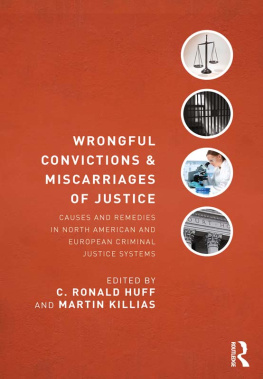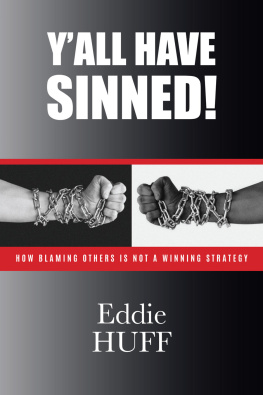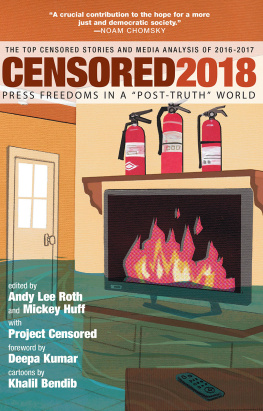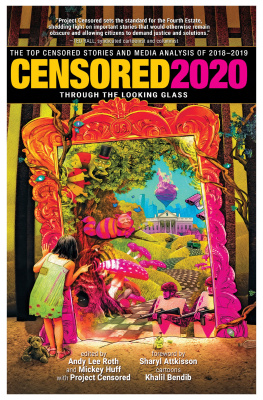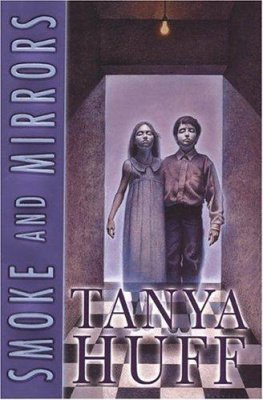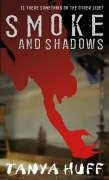Copyright 2002 by Sage Publications, Inc.
All rights reserved. No part of this book may be reproduced or utilized in any form or by any means, electronic or mechanical, including photocopying, recording, or by any information storage and retrieval system, without permission in writing from the publisher.
For information:
| Sage Publications, Inc. 2455 Teller Road Thousand Oaks, California 91320 E-mail: Sage Publications Ltd. 6 Bonhill Street London EC2A 4PU United Kingdom Sage Publications India Pvt. Ltd. M-32 Market Greater Kailash I New Delhi 110 048 India |
Printed in the United States of America
Library of Congress Cataloging-in-Publication Data
Main entry under title:
Gangs in America III / edited by C. Ronald Huff.
p. cm.
Rev. ed. of: Gangs in America. 2nd ed. cl996.
Includes bibliographical references and index.
ISBN 0-7619-2423-X (cloth: acid-free paper)
ISBN 0-7619-2424-8 (pbk.: acid-free paper)
1. GangsUnited States. I. Title: Gangs in America
II. Huff, C. Ronald.
HV6439.U5G36 2001
364.16973dc21 2001004076
06 10 9 8 7 6 5 4 3 2
Acquiring Editor: | Jerry Westby |
Editorial Assistant: | Vonessa Vondera |
Production Editor: | Denise Santoyo |
Typesetter/Designer: | Janelle LeMaster |
Indexer: | Kathy Paparchontis |
Contents
James F. Short, Jr.
C.Ronald Huff
James C. Howell, John P. Moore, and Arlen Egley, Jr.
Cheryl Maxson and Monica L. Whitlock
Finn-Aage Esbensen, Dana Peterson, Adrienne Freng, and Terrance J. Taylor
Scott H. Decker and Janet L. Lauritsen
Robert J. Bursik, Jr.
Steven R. Cureton
John M. Hagedorn
Kenneth S. Trump
C. Ronald Huff and Kent H. Shafer
James W. Meeker and Bryan Vila
James Diego Vigil and Steve C. Yun
Jody Miller
Mark S. Fleisher
Sheldon X. Zhang
Malcolm W. Klein
Gilbert Geis
Anthony A. Braga, David M. Kennedy, and George E. Tita
C. Ronald Huff
Foreword
What Is Past Is Prelude: Gangs in America and Elsewhere
JAMES F. SHORT, JR.
It is no longer the case that current issues in criminology, especially gang issues, are primarily new urgencies to old issues (Short, 1990, p. 223). Although many old issues remain unresolved and controversial, important developments since the appearance of the second edition of Gangs in America (GIA) warrant this third edition. New methodological approaches are explored (Howell, Moore, & Egley, ). Although theoretical advances in the study of gangs continue to lag behind empirical descriptions, here also, this edition of GIA offers new insights and possibilities.
Here my focus is on three of these developments: (a) the distribution of gangs, in this country and elsewhere; (b) gangs and gender; and (c) gangs and age, race, and ethnicity. Finally, I attempt to assess the significance of these relationships for the state of knowledge about gangs and crime, and what they portend for the control of crime. Although the empirical picture is far from clear, it is clear that gangs are extremely diverse in virtually every dimension: their composition, structure, and behavior. The theoretical picture is even less clear, but among the chapters to follow, significant challenges are to be found. Indeed, observed changes here reported have important implications for much of social and behavioral science, as well as criminology.
The Distribution of Gangs
Youth, or street, gangshowever they are defined (still an important issue; see Klein, ). Since 1996, the National Youth Gang Center (NYGC) has conducted annual surveys focused on the prevalence, composition, and behavior of youth gangs in local jurisdictions across the country. The most recent surveys gather data from more than 3,000 local law enforcement agencies. Howell and his colleagues summarize a great deal of the information that has been gleaned from these surveys and other sources.
The NYGC surveys have been refined each year and are becoming an increasingly valuable source of data. These and other studies suggest that street gangs remain predominantly a large city phenomenon, but that smaller jurisdictions also report a good deal of youth gang activity. Reports from cities serving populations of 100,000 or more suggest little change in numbers of gangs and gang members between 1996 and 1999, but smaller jurisdictions report modest declines in both figures over this period. Smaller jurisdictions also report that the prevalence of gangs is a more recent phenomenon than is the case in larger jurisdictions.
Although this period is too brief to constitute much of a trend, it does suggest a sort of ebb and flow of gang culture in many parts of the United States, the exception being very large cities in which gangs have a much longer history.; Short, 1998; Sullivan, 1989).
Kleins ).
Gangs and Gender
Editions of GIA after the first devote increasing attention to female gangs and ganging. Reviews of that literature and original research here reported by Jody Miller (; see also Fleisher, 1998; Klein, 1995).
Mark Fleishers yields a somewhat different picture of female gang members and their gangs than has been portrayed in other gang research. Although some of these differences may be artifacts of methodology and unique to his research settings, it is quite possibleindeed, I think it is likelythat his research methods reveal some differences that have not been discovered by traditional survey and interviewing methods.
Using a combination of ethnographic and network methods, Fleisher focuses on the Fremont Hustlers, a Kansas City, Missouri, gang about which he has written extensively (Fleisher, 1998), and on female members of several gangs located in North Champaign, Illinois. Among the Fremont Hustlers, gender, race, and ethnicitywhich are associated with gang affiliation and activities in most studieswere not important


